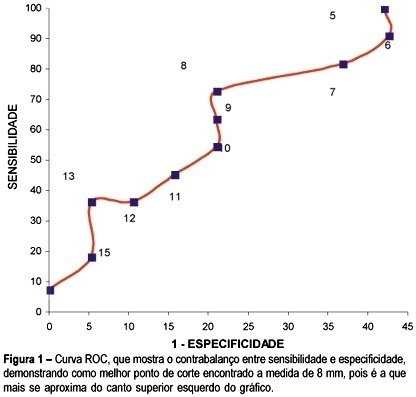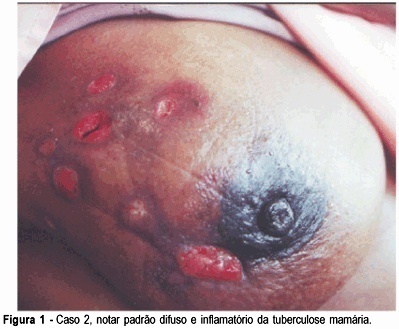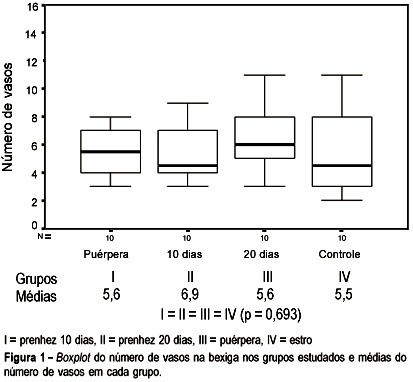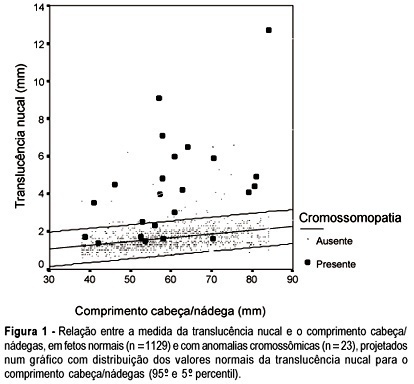Summary
Revista Brasileira de Ginecologia e Obstetrícia. 2002;24(4):233-239
DOI 10.1590/S0100-72032002000400004
Purpose: to analyze sensitivity, specificity, positive and negative predictive values and the likelihood ratio of transvaginal ultrasound and hysteroscopy when compared with the histopathologic examination of the endometrium in women with breast cancer who have been treated with tamoxifen. Methods: transversal study with 30 women in whom transvaginal ultrasound evaluated the echogenic pattern of endometrial echo and its thickness. Hyteroscopy was performed and described as normal (normal or atrophic endometrium) or abnormal (thickening, polyps, leiomyoma, synechia). Material for histopathology was obtained from endometrial biopsy and the findings were considered normal (irregular endometrial maturation and/or atrophy) or abnormal (polyps, simple or complex hyperplasia, leiomyoma or endometrial carcinoma). Results: the general diagnosis of endometrial modifications was present in 36.6% of patients. The most frequent results were cystic atrophy (46.6%) and endometrial polyps (26.6%). Through the ROC curve the best cutoff of 8 mm of endometrial thickness measure was determined. This measure showed sensitivity of 72.7%, specificity of 72.9%, positive predictive value of 66.6%, negative predictive value of 83.3% and likelihood ratio of 3.4. Hysteroscopy showed sensitivity of 90.9%, specificity of 68.4%, positive predictive value of 62.5%, negative prediction value of 92.8% and likelihood ratio of 2.8. Conclusions: the most frequent endometrial modifications were cystic atrophy followed by polyps. Transvaginal ultrasound showed a higher rate of false-positive (42.1%), when the cutoff for the thickness of the endometrium was 5 mm; however acuracy improved when the measure of 8 mm was used. The cutoff of 8 mm was determined through the ROC curve.

Summary
Revista Brasileira de Ginecologia e Obstetrícia. 2002;24(4):221-226
DOI 10.1590/S0100-72032002000400002
Purpose: to evaluate the relationdhip between preservation of the intercostobrachial nerve and pain sensitivity of the arm, total time of the surgery, and number of dissected nodes in patients submitted to axillary lymphadenectomy due to breast cancer. Methods: an intervention, prospective, randomized and double-blind study was performed on 85 patients assisted at the State University of Campinas, Brazil, from January 1999 to July 2000. The patients were divided into two groups, according to the intention of preserving or not the intercostobrachial nerve. The surgeries were performed by the same researchers, utilizing the same technique. The postoperative evaluations were performed within 2 days, 40 days and after 3 months. The pain sensitivity of the arm was evaluated through a specific questionnaire (subjective evaluation) and through a neurological physical examination (objective evaluation). Results: the surgical technique was applied to all patients and the preservation of the intercostobrachial nerve was related to a significant decrease in the alterations of pain sensitivity of the arm, both by the subjective and objective evaluations. After three months, in the subjective evaluation, 61% of the patients were asymptomatic in the intercostobrachial nerve preservation group and 28.6% in the nerve section group (p<0.01). By the objective evaluation, 53.7% of the patients presented normal neurological examination in the intercostobrachial nerve preservation group and 16.7% in the nerve section group (p<0.01). No significant difference was observed regarding total time of surgery (p=0.76) and number of dissected nodes between the two evaluated groups (p=0.59). Conclusions: these data show that the preservation of the intercostobrachial nerve is feasible and leads to a significant decrease in the alterations of pain sensitivity of the arm, without interfering in the total time of surgery and the number of dissected nodes.
Summary
Revista Brasileira de Ginecologia e Obstetrícia. 2002;24(4):247-251
DOI 10.1590/S0100-72032002000400006
Purpose: to compare cervical length measurements in twin pregnancies obtained by transvaginal ultrasound examination in the recumbent and standing positions. Methods: fifty twin pregnancies underwent transvaginal ultrasound examinations to measure the cervical length with the women in recumbent and standing positions. The study was carried out between May 1999 and December 2000. The scans were repeated every 4 weeks and the total number of evaluations was 136. Two groups were analyzed: one included only the first ultrasound examinations carried out in each woman and the second group included all evaluations. Results: in the first group, cervical length measurements in the standing and recumbent positions correlated inversely with the gestational age (recumbent: r=-0.60; p<0.001; standing: r=-0.46; p=0.008). The mean measure in the recumbent position was 35.2 mm (SD=9.9 mm) and 33.4 mm (SD=9.5 mm) in the standing position. When the difference between the measure obtained in the standing and recumbent positions was expressed as percentage of the measure in the recumbent position, there was no significant association with gestational age (p=0.07). When all evaluations were considered, there was a significant association between cervical length in the recumbent and standing positions (r=0.79; p<0.001). The measures in recumbent and standing positions were inversely correlated with gestational age (recumbent: p<0.0001; standing: p<0.0001). The mean cervical length in the recumbent position was 33.5 mm (SD=10.8 mm) and 31.8 mm (SD=9.6 mm) in the standing position. There was no significant association between cervical length difference expressed as percentage of the measure in the recumbent position and gestation. Conclusion: cervical length measure obtained with the patients in the recumbent and standing positions provided similar information.

Summary
Revista Brasileira de Ginecologia e Obstetrícia. 2002;24(4):241-246
DOI 10.1590/S0100-72032002000400005
Purpose: to make a differential diagnosis in regard to breast carcinoma and to evaluate diagnostic and clinical methods in the treatment of breast tuberculosis and the follow-up after adequate treatment. Patients and Methods: three patients with breast tuberculosis were observed from March 2001 to March 2002; the first two were hospitalized at our Mastology Department and the third patient was treated at a private clinic. The clinical signs and symptoms, laboratory findings, response to therapy and follow-up were evaluated. Results: the average age of the patients was 40.6 years. The most frequent signs and symptoms were pain and breast tumor. In two patients the presumptive diagnosis was based on the clinical findings, on the histological findings (granulomatous inflammatory process), and on the therapeutic response to tuberculostatic drugs. Only one patient had a microbiological diagnosis, as Koch's bacillus was identified in a sample of her breast tissue. Treatment with a triple tuberculostatic regimen, including rifampin, isoniazid and pyrazinamide, led to the regression of the lesions. Conclusion: primary breast tuberculosis, a rare occurrence which may present clinically as a breast nodule and radiologically as carcinoma, should be taken into account when making the differential diagnosis of patients presenting with mammary mass.

Summary
Revista Brasileira de Ginecologia e Obstetrícia. 2002;24(4):227-231
DOI 10.1590/S0100-72032002000400003
Purpose: to evaluate the variations in vascular anatomy by assessing the number of vessels of the proximal and distal urethra, of the vesicourethral canal and of the bladder, during and after pregnancy in rats. Method: thirty female rats, with a positive test for pregnancy, were divided into three groups of 10 animals each: GI - rats on the 10th day of pregnancy; GII - rats on the 20th day of pregnancy; GIII - rats on the 5th day of puerperium; a control group (GIV) composed of 10 rats in the estrous phase. The vessels were stained by the method of Masson and counted with a 25-dot integration ocular, coupled to a light microscope, with an objective of 40X. The studied regions were proximal and distal urethra, vesicourethral canal and bladder. Results: there was no significant variation in the vessel number in the bladder, in the vesicourethral canal and in the proximal urethra during gestation. In the distal urethra of the group IV there were 13.7 vessels, less than that observed in the pregnant groups (20.5 to 24.4 vessels). Conclusion: the pregnant rats had a larger number of vessels in the distal urethra than those in the estrous phase. There were no differences regarding the other sites.

Summary
Revista Brasileira de Ginecologia e Obstetrícia. 2002;24(4):253-259
DOI 10.1590/S0100-72032002000400007
Purpose: to determine the frequency of enteroparasitoses in a group of pregnant women undergoing low-risk antenatal care and their association with anemia, maternal nutritional status, schooling and the existence of a bathroom in the home. Methods: to a sample of pregnant women who had begun low-risk antenatal care at IMIP's Maternal Health Care Center between May 2000 and July 2001, a cross-sectional design was applied to determine the frequencies of enteroparasitoses (Hoffman method, in a single sample) and anemia (Hb <11.0 g/dL), nutritional status (through BMI standardized for stage of pregnancy) and social indicators (schooling and the existence of a bathroom in the home). Results: in a sample of 316 pregnant women, a rate of 37.4% enteroparasitosis was detected, of which 31.6% was infestation by a single parasite. The most commonly found parasite species were Entamoeba histolytica (13.3%) and Ascaris lumbricoides (12.0%). Anemia was detected in 55.4% of the pregnant women, malnutrition in 25.0% and overweight or obesity in 24.1%. There was a statistically significant association between enteroparasitosis and schooling. However, no association of, enteroparasitosis, anemia, maternal nutritional status with the existence of a bathroom in the home was noted. Conclusions: The prevalence of enteroparasitoses and anemia is high, albeit without any association of the two conditions, while schooling was statistically associated with the presence of intestinal parasites.
Summary
Revista Brasileira de Ginecologia e Obstetrícia. 2002;24(3):153-160
DOI 10.1590/S0100-72032002000300002
Purpose: to study the fetal hemodynamic profile in high-risk pregnancy and correlate it with perinatal results. Methods: transverse prospective study of 108 patients of the Obstetric Clinic of the Hospital das Clínicas, São Paulo University School of Medicine. The patients were evaluated at the Fetal Surveillance Unit, and Doppler examinations of umbilical, aorta, middle cerebral artery, inferior vena cava and ductus venosus were performed. The criteria for inclusion were patients whose delivery was in the next 24 hours after evaluation. Twin pregnancies and fetal malformations were excluded. Results: the hemodynamic implications in the fetal circulation were demonstrated by changes in the Doppler ultrasonographic results in the umbilical artery, aorta, middle cerebral artery, ductus venosus and in the inferior vena cava. The Doppler examinations were abnormal in the umbilical artery (25.9%), fetal aorta (24%), middle cerebral artery (34.2%), ductus venosus (18.2%) and inferior vena cava (46,6%). Segments of the fetal circulation which best correlated with the perinatal results were the umbilical artery and the ductus venosus. The abnormal results in the umbilical artery were significantly associated with 1st minute Apgar score <7 in 42.8% and need of neonatal intensive care unit in 50% of the cases. The abnormal results in the ductus venosus Doppler ultrasonography showed statistical association with 1st minute Apgar score <7 (52.6%), 5th min Apgar <7 (15.7%), acidemia at birth (60%), need of neonatal intensive care unit (52.6%) and neonatal death (21.1%). The predictive values of the ductus venosus Doppler for fetal acidemia were: sensitivity of 39.1; specificity of 90.4; positive predictive value of 60.0 and negative predictive value of 80.2. Conclusion: the Doppler ultrasonography allowed us to evaluate the fetal hemodynamics in the most varied situations and the study of the venous duct is an important examination in the evaluation of fetal hemodynamic response to hypoxia.
Summary
Revista Brasileira de Ginecologia e Obstetrícia. 2002;24(3):167-173
DOI 10.1590/S0100-72032002000300004
Purpose: to study the value of nuchal translucency (NT) measurement in the screening for chromosomal abnormalities at 10-14 weeks of gestation. Methods: a total of 1152 fetuses were studied consecutively. In 124 cases a cytogenetic study was performed on material obtained from a biopsy of the chorionic villus, and in 1028 cases the result was based on the postnatal phenotype. In addition to the routine ultrasonographic examination, all fetuses were submitted to measurement of the NT thickness. For statistical analysis Student's t test and ANOVA were used. Sensitivity, specificity, positive and negative predictive values, false-positive rate and likelihood ratio were calculated. Results: twenty-three cases of chromosomal abnormalities occurred. Of these abnormal cases, NT measurement was above the 95th percentile in 16 (sensitivity of 69.5%). In the group of normal fetuses (1129 cases), NT measurement was above the 95th percentile in 41 (specificity of 96.3%, positive and negative predictive values of 28.0% and 99.3%, respectively, false-positive rate of 3.7% and likelihood ratio of 19.1). Conclusion: our results suggest that the presence of chromosomal abnormalities may be strongly suspected when there is an increased NT thickness. One can infer that the quantitative NT analysis is sufficient to classify the risk of chromosomal anomalies in the first trimester of the pregnancy. Although the ultrasound operator's training and skill is still necessary, it is a method of clinical applicability.
